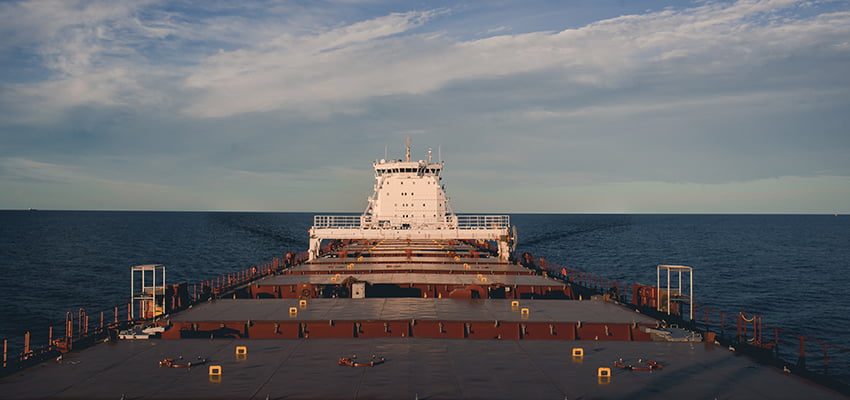BULK carriers and tankers with a draught of up to 12.5metres are now allowed to transit the Torres Strait, following data collection and analysis by the Australian Maritime Safety Authority and successful model validation at sea.
Historically, a 12.2 metre maximum draught limit applied to ships transiting the Torres Strait — a limit which came about via a study back in the 1970s by the Commonwealth Department of Transport.
Compulsory coastal pilotage was introduced in 2006 to protect the Torres Strait as a newly-declared Particularly Sensitive Sea Area by the IMO for ships greater than 70 metres in length.
This was followed by a requirement for ships with a draught of eight metres or more to use AMSA’s Under Keel Clearance Management system in 2014 (later relaxed to nine metres).
According to AMSA, these two requirements have improved safe shipping in the Torres Strait via the operational application of:
- Local navigational knowledge and ship handling expertise; and
- Live data from local environmental sensors and the ship, which corroborate and fine-tune the tide prediction to maintain a safe buffer between the ship’s hull and the ocean floor.
“Over time, the UKCM system and tidal data began to paint a much more detailed picture of the fluctuations in water level on any given day and in any given location throughout the UKCM system’s area of operation,” an AMSA spokesperson said.
“In certain tidal conditions, it was identified that vessels could safely transit Torres Strait with a draught up to 0.3 metres deeper than previously thought.”
That extra draught – or depth of the vessel in the water – allows for more cargo to be carried on a ship before it reaches the prescribed minimum safe buffer between the lowest point of the hull and the ocean floor.
“Historically, these types of ships haven’t always loaded to their full capacity, but with an increase in the maximum draught allowed, industry will now be able to ship greater quantities of product through the Torres Strait without increasing the number of ships required,” the spokesperson said.
“In fact, the revised draught regime could see a reduction in the number of ships transiting the Torres Strait with a commensurate reduction in ship emissions.”
Together with OMC International – which developed the UKCM system – and Rio Tinto, AMSA carefully coordinated staged trials to increase the maximum draught allowed.
Trials occurred between 2016 and 2019.
Following successful trials, AMSA introduced the new maximum draught limit of 12.5 metres for bulk carriers and tankers in July 2019 via an exemption to Marine Order 54 (Coastal pilotage).
“It’s important to note the prescribed minimum safe buffer between a ship’s hull and the ocean floor remains the same, hence the overall safety margin remains the same,” the spokesperson said.
The spokesperson confirmed further research would be applied into other types of ships including container ships and car carriers.
“Put simply, their movement through the water and interactions with the bottom is different when compared to bulk carriers and tankers,” the spokesperson said.
“Full-scale vessel motion measurements of container ships have been completed as part of the sea trials, with the final analysis of these to be presented to AMSA shortly. The results of the analysis will inform whether vessels like container ships and car carriers are similarly exempted in due course.”

